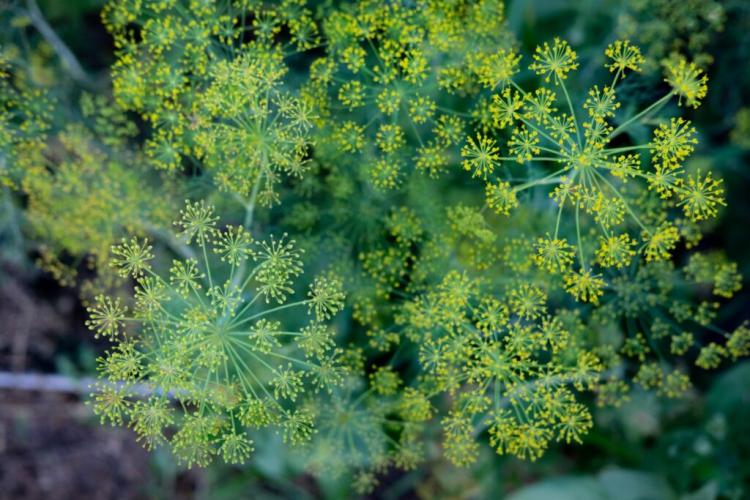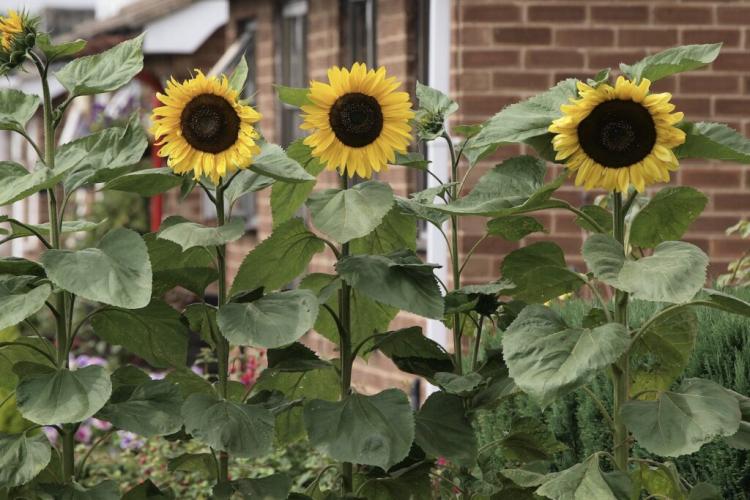Pencil Tree: Location, Care & Propagation Of Euphorbia Tirucalli
The pencil tree (Euphorbia tirucalli ) is an easy-care succulent with an unusual appearance. Here are tips on how to handle the plant properly.
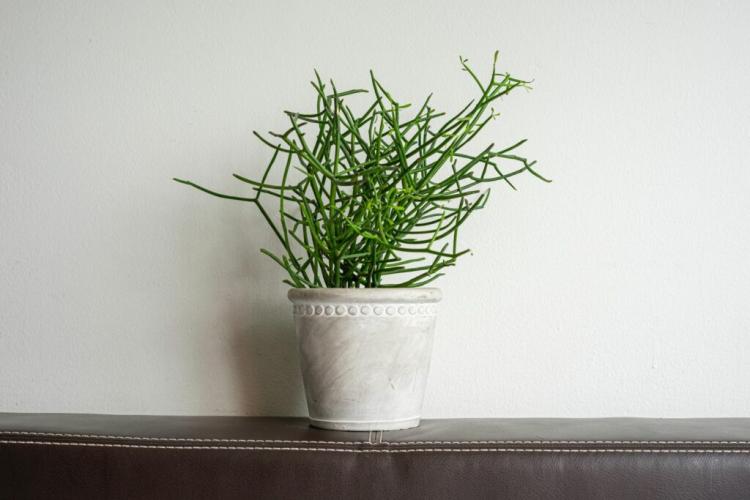
When looking at it, it quickly becomes clear why Euphorbia tirucalli is also known as the pencil tree [Photo: Phubes Juwattana / Shutterstock.com]
Like most succulents, the pencil bush is a relatively undemanding plant. However, due to the toxic latex that can escape at interfaces, some caution is required when handling the plant. You can find out what else you should pay attention to in terms of location and maintenance here.
Pencil tree: flowering, origin and characteristics
Table of Contents
The pencil tree (Euphorbia tirucalli ) is also known as the pencil bush, pencil plant or milk bush. The plant originally comes from the southern and eastern regions of Africa and is now very popular as a houseplant – also thanks to the low maintenance required. Euphorbia tirucalli belongs to the genus Spurge (Euphorbia ) within the Spurge Family (Euphorbiaceae). Like many species of this family of plants, the pencil tree also contains a milky sap that escapes when the plant is damaged. In the case of Euphorbia tirucalli, this milky sap is poisonous and corrosive, which is why a safe location should be selected for the plant.
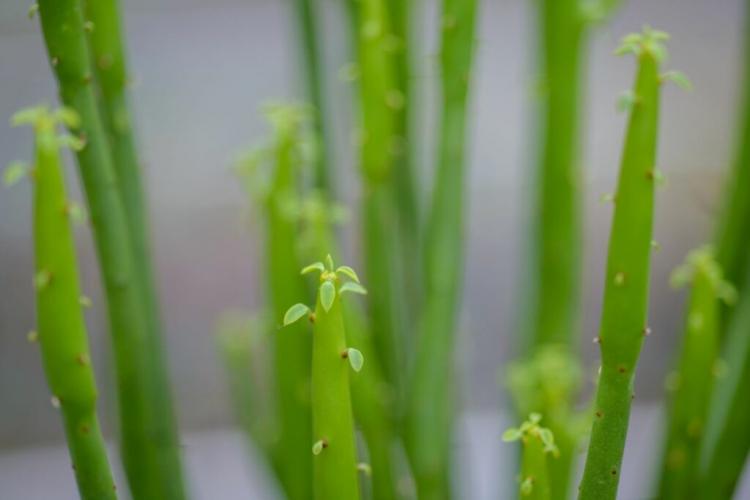
The small leaves are shed quickly [Photo: Jerry Lin / Shutterstock.com]
The pencil tree consists of green and fleshy, but narrow branches that give it a special look. The leaves can store water to survive dry spells. The leaves on the shoots are small and inconspicuous and are usually thrown off quickly. In the wild, the plant also grows small yellowish flowers that are located at the ends of the branches between June and August. While indoor shrubs are only about 80 cm tall, pencil trees in nature also reach heights of up to 10 meters.
Tip : In addition to the classic green milk tree, there is also an interesting variety, also known as the “Stick of Fire”: The shoots of Euphorbia tirucalli 'Rosea' are fiery red and give the plant a special look.

The variety 'Rosea' lives up to its name [Photo: Olga Kashubin / Shutterstock.com]
Planting a pencil tree: location, time and procedure
When choosing a location for the pencil tree, it is important to ensure that there is sufficient sunlight. Since the Euphorbia tirucalli needs direct sunlight, it should be placed in a south-facing window, for example. Sufficient warmth is usually provided there, because the pencil tree does not get temperatures below 12 ° C. In summer, the succulent can also be placed in a bright place outdoors.
The pencil bush is a bit more demanding when it comes to substrate: To avoid waterlogging, the potting soil should be permeable and well-drained. You can use cactus soil for the pencil tree.
Tip : If you water less and less, the pencil tree can simply be planted in universal soil. It is best to check regularly whether the plant is doing well and the water supply is suitable.
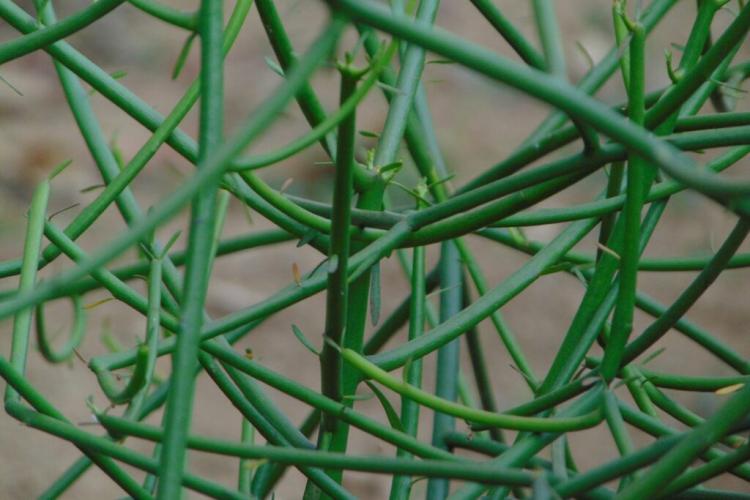
The fleshy shoots also serve as water reservoirs [Photo: Hardow / Shutterstock.com]
Care of the pencil tree
The pencil tree care is very easy, because the plant does not need a lot of water or nutrients. But every now and then the pencil bush also needs a little attention. We briefly show what needs to be considered.
When the substrate has dried on the surface, you should water the soil. Ideally, you should use rainwater for watering, as it is naturally low in lime and this benefits the pencil bush. Water is poured about once a week in summer, less often in winter. Excess water must be removed from the saucer to prevent root rot.
Tip : A sign of too little water are limp, drooping branches.

In other milkweed plants, too, a milky juice emerges at the interfaces [Photo: ElenVik / Shutterstock.com]
The nutritional requirement of the milk tree is rather low. In the growing season from spring to autumn, however, you should provide the fast-growing plant with some fertilizer every four weeks. For example, our Plantura organic indoor & green plant fertilizer is suitable, which you add in half concentration to the irrigation water. Due to the high proportion of organic ingredients, the nutrients are not released in one fell swoop and there is less risk of over-fertilization.
In winter you should give the pencil tree a break. The plant is then kept in a bright place at around 15 ° C. Watering is now even less frequent, just enough so that the root ball does not dry out completely. Fertilizer is not necessary during this time. The rest period should be about three months and take place between October and February.
To bring older specimens back into shape, it is a good idea to cut the pencil tree. A pruning is particularly appropriate if the lower part of the plant becomes bare and no more fresh shoots are formed. To do this, cut back the shoots by about a third. You should protect yourself with gloves against the milky juice that escapes during pruning and clean all devices afterwards. The interfaces on the pencil tree can be treated with a damp cloth. It is best to cut towards the end of the resting phase, then less sap will escape and the plant can sprout again immediately in spring. The separated shoots are also suitable for the propagation of the milk tree.
The pencil tree should be repotted every two to three years. Here, too, it is recommended to wear gloves for safety. When the old pot is completely rooted, it should also be repotted in a larger planter.
Tip: With a layer of pebbles on the bottom of the vessel, you can also secure the water drainage and avoid waterlogging.
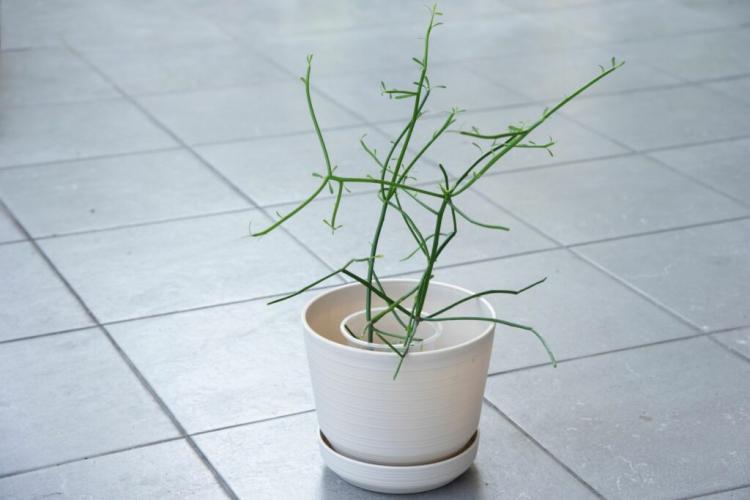
The pencil bush can take on bizarre shapes [Photo: Young Swee Ming / Shutterstock.com]
Propagate pencil bush
Cuttings are ideal for propagating the pencil tree. In spring, cut off a few shoots about 15 cm in length directly below the leaf knot. The cuttings are then dried for about two days so that the interfaces do not rot. They can then be placed in a nutrient-poor substrate and placed in a warm, bright place. Our Plantura organic herb & sowing soil is ideal for growing cuttings, for example. The nutrient-reduced soil promotes strong root growth of the seedlings before they grow upwards. Our earth consists of natural raw materials and does not need any peat at all. Keep the substrate moderately moist to prevent root rot. After about three weeks, roots should have formed so that the small pencil trees can now be treated like the mother plant. It is essential to wear gloves when propagating in order to protect yourself from the caustic milky sap.
Common pests and diseases of Euphorbia tirucalli
The pencil bush is considered to be a very resilient plant and is rarely attacked by pests. If it still does not grow well or looks limp, the cause is usually too cold or wet. The following pests can still occur occasionally:
- Mealybugs, aphids or spider mites: They rarely appear on the pencil tree and then usually appear in the room when the humidity is low.
- Ascent fungi: These are caused by waterlogging, which also leads to root rot and can manifest itself in a yellow coloration of the shoots.
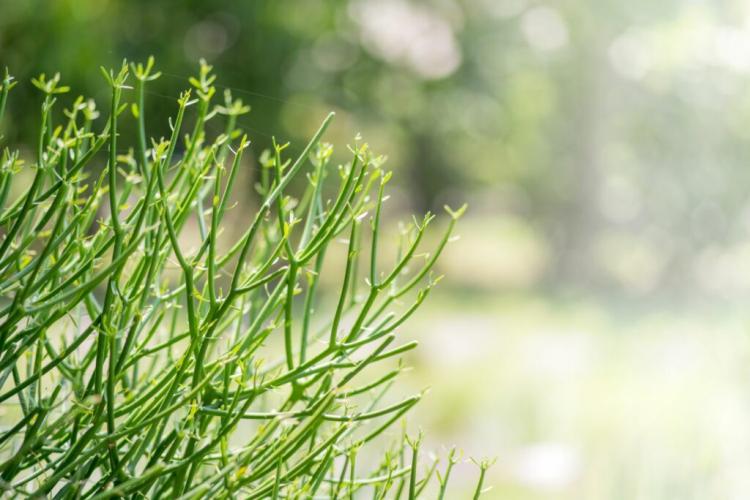
In summer, the milk bush can also be put outside [Photo: Jerry Lin / Shutterstock.com]
Tip: The most common mistake in caring for a pencil tree is excessive watering, which can cause waterlogging and root rot. In this case, the plant should be repotted immediately in dry, fresh substrate.
Is the pencil bush poisonous?
The pencil bush is indeed a poisonous plant. This is due to the milky sap in the succulent branches, which escapes when injured and is skin-irritating. Therefore, only place the plant in a place that is inaccessible to pets and children and always wear gloves when pruning.
We have even more tips and tricks on how to properly care for your succulents and what to consider when watering and fertilizing.


